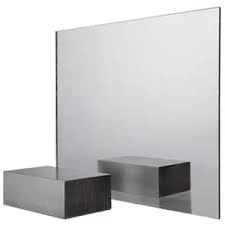

Strengthened Glass An Overview of Its Properties and Applications
Strengthened glass, often referred to as tempered glass or toughened glass, represents a significant advancement in the field of material engineering. Its unique properties make it an essential component in various applications, ranging from architectural designs to automotive safety features.
What is Strengthened Glass?
Strengthened glass is produced through a process of extreme heating and rapid cooling, which enhances its strength compared to regular glass. Typically, the glass is heated to temperatures of approximately 600 degrees Celsius and then swiftly cooled. This process creates a compressive stress layer on the surface, allowing it to withstand greater impacts and thermal stress than untreated glass. While standard flat glass has a tensile strength of about 30 MPa, tempered glass can have a tensile strength of around 100 MPa, making it significantly more durable.
Properties of Strengthened Glass
1. Increased Safety One of the most notable properties of strengthened glass is its safety profile. When broken, tempered glass shatters into small, blunt pieces rather than sharp shards, greatly reducing the risk of injury. This makes it a preferred material for applications where safety is a primary concern.
2. Enhanced Thermal Resistance The heating and cooling process not only strengthens the glass but also allows it to endure temperature fluctuations. Tempered glass can withstand thermal stresses of up to 220 degrees Celsius, making it suitable for environments with significant temperature changes, such as shower doors or facades in modern architecture.
3. Optical Clarity While strength is an essential factor, the optical clarity of strengthened glass remains uncompromised. It transmits light effectively, maintaining high visibility and aesthetic appeal. It is often utilized in applications where design and clarity are crucial, such as glass facades in commercial buildings or display cases.
4. Versatility Strengthened glass is versatile in its applications. It can be manufactured in various sizes and shapes, allowing it to be used in a wide range of industries, including construction, automotive, and electronics.

Applications of Strengthened Glass
The applications of strengthened glass are vast and varied. Below are some key areas where it is commonly utilized
1. Architecture and Construction Strengthened glass is increasingly used in building facades, windows, and glass doors due to its strength, safety features, and visual appeal. In modern architecture, large glass panels are used to maximize natural light, while tempered glass provides the necessary safety and thermal resistance.
2. Automotive Industry In vehicles, strengthened glass is used for windshields and side windows, providing protection and enhancing safety. The durability of tempered glass helps in resisting breakage during accidents and serves to improve overall vehicle safety ratings.
3. Interior Design Strengthened glass is popular in interior design, used in applications such as glass partitions, shower enclosures, and tabletops. Its balance of aesthetic beauty and practical safety makes it a favored choice among designers and homeowners.
4. Electronics With the rise of touch screen devices, strengthened glass is used for smartphone and tablet screens. Corning's Gorilla Glass, an example of strengthened glass, is designed to be thin yet resilient, providing protection without compromising the device's functionality.
5. Furniture In modern furniture design, strengthened glass surfaces are typical, combining contemporary aesthetics with practical safety features. Whether used in tabletops or shelving, tempered glass provides a sleek look while ensuring durability.
Conclusion
Strengthened glass has revolutionized the way we approach safety and design in everyday products and structures. Its enhanced strength, thermal resistance, and optical clarity make it an invaluable material across numerous industries. As technology continues to advance, the potential applications for strengthened glass are likely to expand, further solidifying its role as a crucial component in modern engineering and design. Whether in our homes, vehicles, or electronic devices, strengthened glass epitomizes the intersection of functionality, aesthetics, and safety.